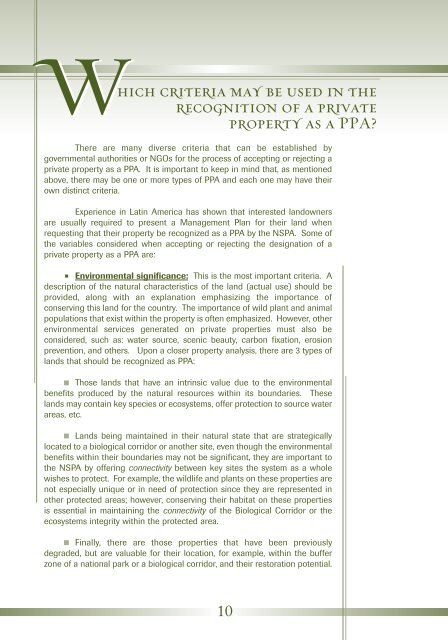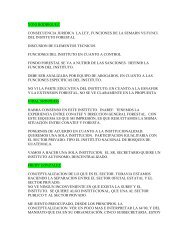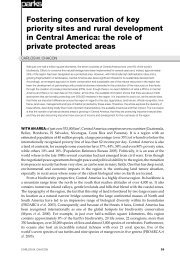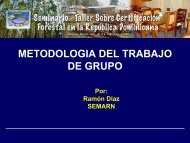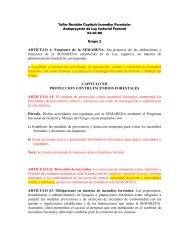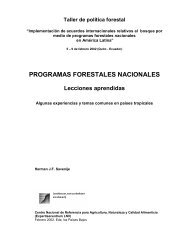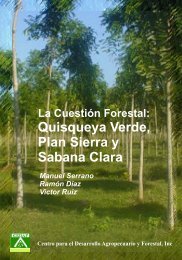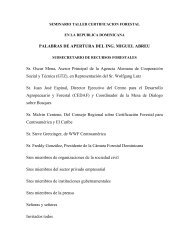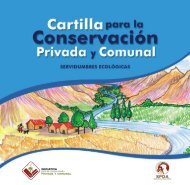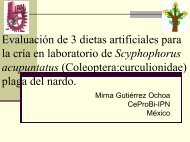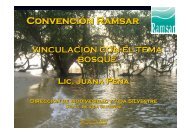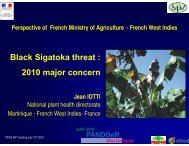Desarrollando Developing - CEDAF
Desarrollando Developing - CEDAF
Desarrollando Developing - CEDAF
You also want an ePaper? Increase the reach of your titles
YUMPU automatically turns print PDFs into web optimized ePapers that Google loves.
Which criteria may be used in therecognition of a privateproperty as a PPA?There are many diverse criteria that can be established bygovernmental authorities or NGOs for the process of accepting or rejecting aprivate property as a PPA. It is important to keep in mind that, as mentionedabove, there may be one or more types of PPA and each one may have theirown distinct criteria.Experience in Latin America has shown that interested landownersare usually required to present a Management Plan for their land whenrequesting that their property be recognized as a PPA by the NSPA. Some ofthe variables considered when accepting or rejecting the designation of aprivate property as a PPA are:Environmental significance: This is the most important criteria. Adescription of the natural characteristics of the land (actual use) should beprovided, along with an explanation emphasizing the importance ofconserving this land for the country. The importance of wild plant and animalpopulations that exist within the property is often emphasized. However, otherenvironmental services generated on private properties must also beconsidered, such as: water source, scenic beauty, carbon fixation, erosionprevention, and others. Upon a closer property analysis, there are 3 types oflands that should be recognized as PPA:Those lands that have an intrinsic value due to the environmentalbenefits produced by the natural resources within its boundaries. Theselands may contain key species or ecosystems, offer protection to source waterareas, etc.Lands being maintained in their natural state that are strategicallylocated to a biological corridor or another site, even though the environmentalbenefits within their boundaries may not be significant, they are important tothe NSPA by offering connectivity between key sites the system as a wholewishes to protect. For example, the wildlife and plants on these properties arenot especially unique or in need of protection since they are represented inother protected areas; however, conserving their habitat on these propertiesis essential in maintaining the connectivity of the Biological Corridor or theecosystems integrity within the protected area.Finally, there are those properties that have been previouslydegraded, but are valuable for their location, for example, within the bufferzone of a national park or a biological corridor, and their restoration potential.10


